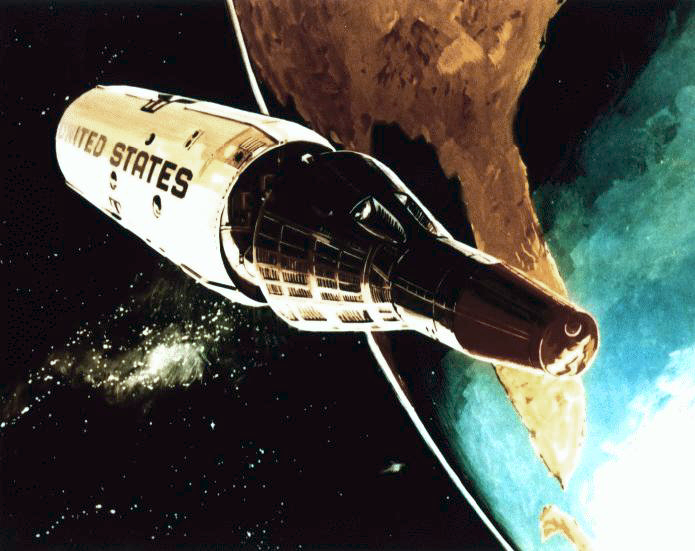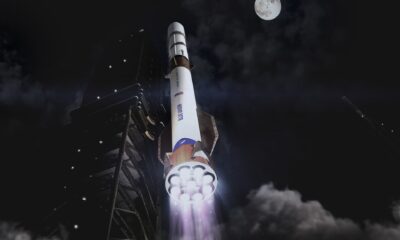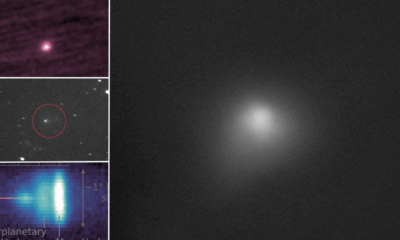Technology
Exploring the Untold Advanced Concepts of Project Gemini

Project Gemini, a cornerstone of America’s early space exploration efforts, played a significant role in the lead-up to the Apollo Moon missions. Recent analysis by Spaceflight Histories highlights several advanced concepts from Project Gemini that never materialized, offering a unique perspective on the program’s ambitious trajectory.
Unrealized Innovations in Project Gemini
While the Apollo missions are often viewed through a lens of success and precise planning, the reality during the 1960s was much more complex. Early concepts from Project Gemini included ideas for manned space stations and even lunar missions, demonstrating a broader vision for human spaceflight. Among these concepts was the proposal for an enlarged spacecraft known as “Big Gemini,” designed to serve as a resupply vehicle.
Unlike the existing Gemini B, which featured an attached laboratory module, Big Gemini aimed to enhance capabilities significantly. This ambition reflected the interests of both NASA and the US Air Force at the time, as both organizations were exploring the possibilities of long-duration space missions.
Other proposed features of the advanced Gemini program included a paraglider landing system. However, this feature was ultimately deemed too intricate and prone to failure, leading to its abandonment.
A Range of Ambitious Concepts
Among the more daring ideas were plans for circumlunar missions, lunar landings, and potential rescue operations for Apollo missions. These concepts emerged particularly after the tragic Apollo 1 incident, which raised significant concerns about the safety and viability of further lunar endeavors.
Though many of these advanced concepts never advanced beyond theoretical stages, they provide a fascinating glimpse into an alternate history of space exploration. The innovative spirit of the Gemini program, even in its unrealized ambitions, showcases the boldness of the era’s visionaries.
While the majority of the Advanced Gemini initiatives did not reach prototype development, they remain an essential part of the narrative surrounding America’s space program. Exploring these concepts allows for a better understanding of the challenges and aspirations that defined the early years of human spaceflight.
As NASA continues to push the boundaries of space exploration today, the legacy of Project Gemini serves as a reminder of the relentless pursuit of innovation that has characterized the agency’s history.
-

 Technology4 months ago
Technology4 months agoDiscover the Top 10 Calorie Counting Apps of 2025
-

 Health2 months ago
Health2 months agoBella Hadid Shares Health Update After Treatment for Lyme Disease
-

 Health3 months ago
Health3 months agoErin Bates Shares Recovery Update Following Sepsis Complications
-

 Technology3 weeks ago
Technology3 weeks agoDiscover 2025’s Top GPUs for Exceptional 4K Gaming Performance
-

 Technology2 months ago
Technology2 months agoElectric Moto Influencer Surronster Arrested in Tijuana
-

 Technology4 months ago
Technology4 months agoDiscover How to Reverse Image Search Using ChatGPT Effortlessly
-

 Technology4 months ago
Technology4 months agoMeta Initiates $60B AI Data Center Expansion, Starting in Ohio
-

 Technology4 months ago
Technology4 months agoRecovering a Suspended TikTok Account: A Step-by-Step Guide
-

 Health4 months ago
Health4 months agoTested: Rab Firewall Mountain Jacket Survives Harsh Conditions
-

 Lifestyle4 months ago
Lifestyle4 months agoBelton Family Reunites After Daughter Survives Hill Country Floods
-

 Technology3 months ago
Technology3 months agoUncovering the Top Five Most Challenging Motorcycles to Ride
-

 Technology4 weeks ago
Technology4 weeks agoDiscover the Best Wireless Earbuds for Every Lifestyle





















